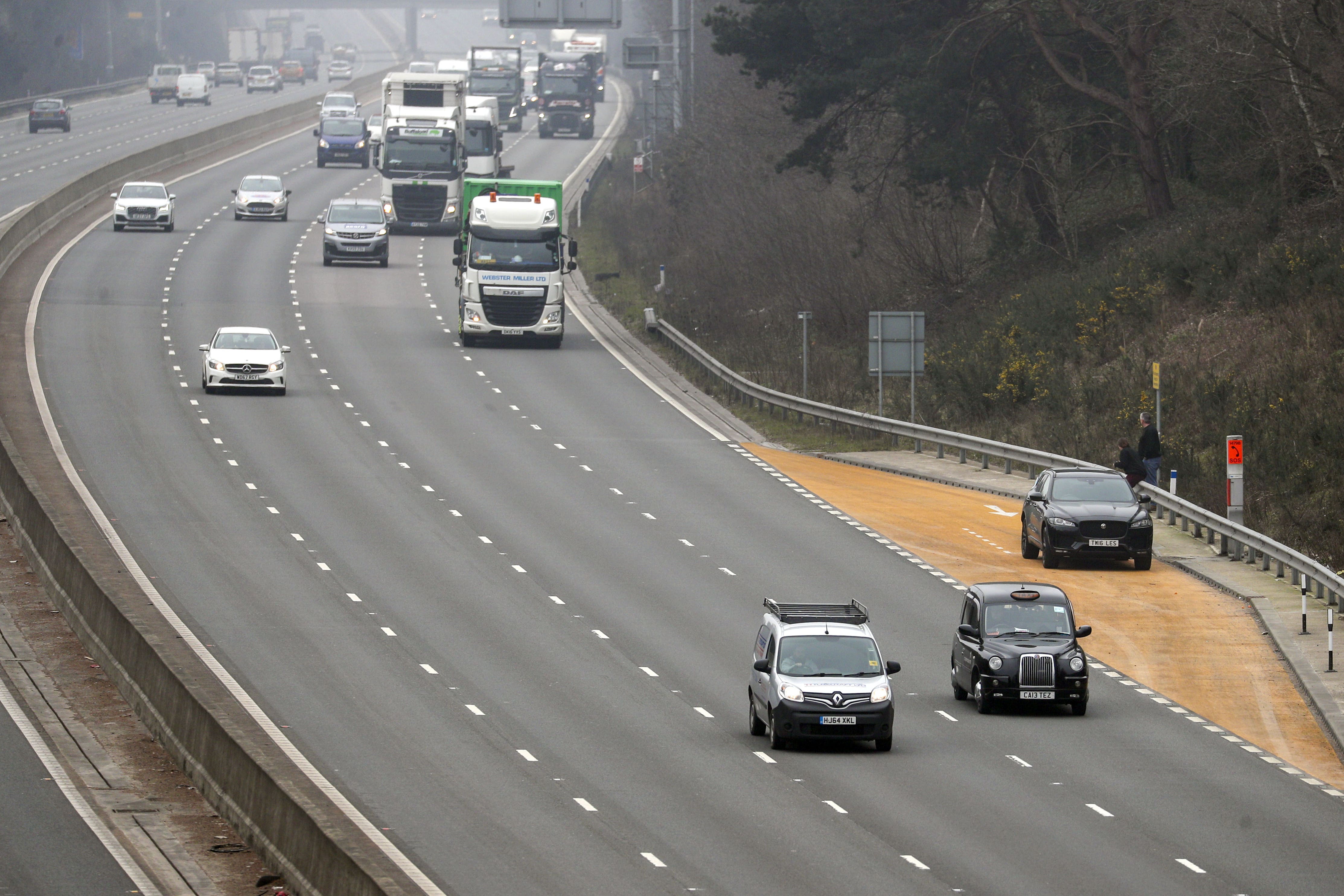Labour claims thousands of stranded drivers left undetected on smart motorways
Transport Secretary Mark Harper insisted smart motorways ‘remain the safest roads on the strategic road network’.

An estimated 4,000 vehicle breakdowns a year on smart motorways are missed by “faulty technology”, Labour has claimed.
Shadow transport secretary Louise Haigh said the “shocking” statistics show motorists have been “left at risk”, as she urged the Government to reinstate the hard shoulder on such roads.
Transport Secretary Mark Harper said it would cost “billions of pounds” to reinstate the hard shoulder while maintaining the capacity of the road network.
He added Labour has “no plan to pay” for such a move and instead claimed the Opposition’s hard shoulder policy would cause congestion on motorways and force drivers onto “less safe” A roads.
The Government earlier this week announced the cancellation of planned projects to build all-lane running (ALR) smart motorways, which use the hard shoulder as a live traffic lane.
The combination of smart motorways and faulty technology are giving drivers serious cause for concern.
ALR smart motorways boost capacity at a lower cost than widening roads.
But there have been long-standing safety fears following fatal incidents in which vehicles stopped in live lanes without a hard shoulder were hit from behind.
Stopped vehicle detection (SVD) technology is designed to detect a stopped vehicle in a live lane in around 20 seconds through radar units monitoring motorway traffic in both directions.
An alert is sent to a control room operator who can view the incident on a camera, activate lane closure signs on gantries and despatch personnel.
Ms Haigh told transport questions in the House of Commons: “Last year the Prime Minister said ‘smart motorways are unpopular because they are unsafe’, yet last week he confirmed he would leave 400 miles’ worth in place.
“Can the Secretary of State tell the House how many breakdowns were missed by the (stopped) vehicle detection system on our smart motorway network last year?”
Mr Harper replied: “Smart motorways remain the safest roads on the strategic road network, which is why the existing smart motorways are going to remain in place and we’re finishing the construction of the two that are almost completed.
“But it’s also worth saying that the public do not have as much as confidence in smart motorways as we would hope.
“And that is why the Prime Minister delivered on the promise that he made to cancel future smart motorways and I think that’s a very sensible, balanced position that we have taken and it’s one I very strongly endorse in the House.”
But Ms Haigh said: “The combination of smart motorways and faulty technology are giving drivers serious cause for concern.
“Last year, over 4,000 breakdowns were missed by this faulty technology. These shocking statistics show motorists have been left at risk by the Government’s shambolic rollout of smart motorways.
“So will he do the right thing and urgently reinstate the hard shoulder?”
Mr Harper countered: “This is a very good example of why the party opposite isn’t fit for government.
“(Ms Haigh) doesn’t want to face up to difficult choices. If she wants to reinstate the hard shoulder and maintain the capacity of the road network that would mean spending billions of pounds on road improvements and she has no plan to pay for it.
“If she’s not doing that it means massive congestion on the motorway network, which will force people off the motorway network onto less safe A roads, which will lead to more people losing their lives, not fewer.”
Labour’s analysis looked at live lane breakdown incidents between 2016 and 2020, noting 60,925 were believed to be on roads without a permanent hard shoulder.
The party then drew upon detection rates published by the Office of Road and Rail to come up with its figure of an average of more than 4,000 breakdowns being missed in a year, or 12 a day.
Subscribe to Independent Premium to bookmark this article
Want to bookmark your favourite articles and stories to read or reference later? Start your Independent Premium subscription today.
